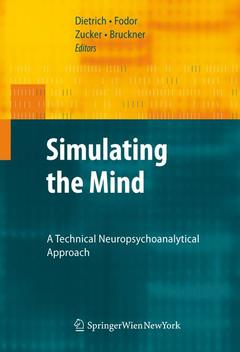Description
Simulating the Mind, 2009
A Technical Neuropsychoanalytical Approach
Coordinators: Dietrich Dietmar, Fodor Georg, Zucker Gerhard, Bruckner Dietmar
Language: English
Subject for Simulating the Mind:
Publication date: 10-2010
436 p. · 15.5x23.5 cm · Paperback
Publication date: 10-2008
436 p. · 15.5x23.5 cm · Hardback
Description
/li>Contents
/li>Comment
/li>
Can psychoanalysis offer a new computer model? Can computer designers help psychoanalysts to understand their theory better?In contemporary publications human psyche is often related to neural networks. Why? The wiring in computers can also be related to application software. But does this really make sense?
Artificial Intelligence has tried to implement functions of human psyche. The reached achievements are remarkable; however, the goal to get a functional model of the mental apparatus was not reached. Was the selected direction incorrect?The editors are convinced: yes, and they try to give answers here. If one accepts that the brain is an information processing system, then one also has to accept that computer theories can be applied to the brain?s functions, the human mental apparatus.
The contributors of this book - Solms, Panksepp, Sloman and many others who are all experts in computer design, psychoanalysis and neurology are united in one goal: finding synergy in their interdisciplinary fields.
Includes supplementary material: sn.pub/extras




